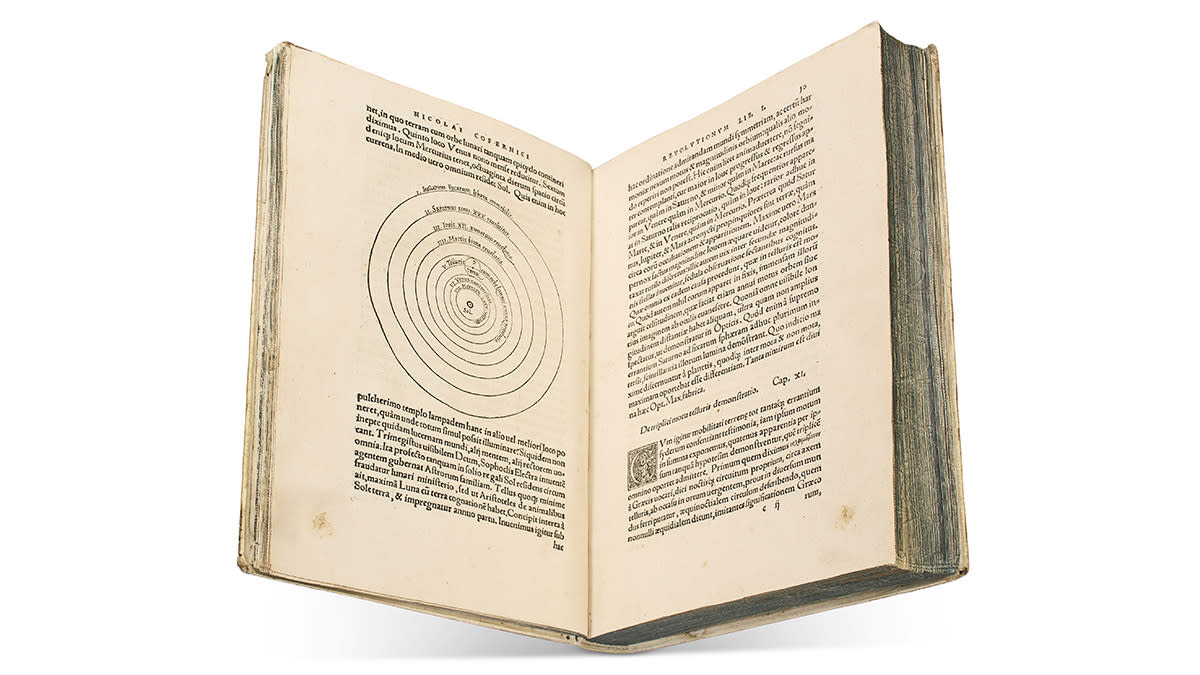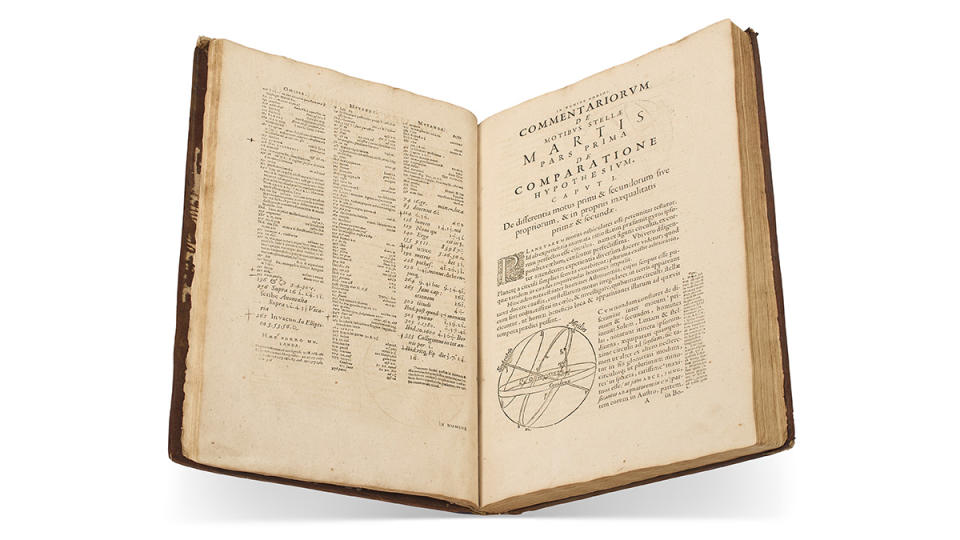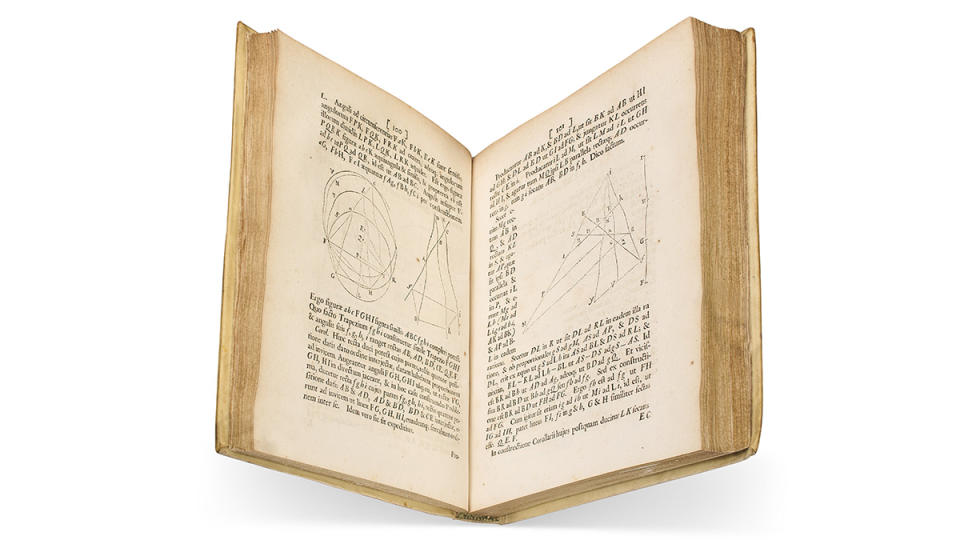A Copernicus Book From 1543 Could Fetch $1.5 Million at Auction

- Oops!Something went wrong.Please try again later.
- Oops!Something went wrong.Please try again later.
The next total solar eclipse may not occur in the United States for another two decades, but fans of astronomy will soon have a chance to dive deep into the cosmos in a slightly different way.
In June, Christie’s will auction off astronomical tomes from the collection of Jay M. Pasachoff. The late astronomy professor at Williams College was a giant in scholarship on the subject, and he worked to amass a library of great historical importance. In his possession were works by Nicolaus Copernicus, Isaac Newton, Galileo Galilei, and other important figures in astronomy, all of which will hit the block during the sale.
More from Robb Report
A Ford GT With an Air Jordan Paint Job Could Fetch $1.2 Million at Auction
A Treasure Trove of Princess Diana's Dresses, Shoes, and Accessories Is Heading to Auction
This Ferrari Has a Top Speed of 15 MPH. It Could Fetch $1 Million at Auction.

Leading the lots is a 1543 first edition of Copernicus’s De revolutionibus orbium coelestium, expected to fetch an impressive $1 million to $1.5 million. The groundbreaking tome, which details the astronomer’s assertion that Earth and other plants in our solar system revolve around the sun, was a controversial idea at the time, since people of the day believed Earth was the center of the universe, according to the Library of Congress. Pasachoff’s version had previously been the property of a Minorite friar. Next in line is a first edition of Newton’s Principia in contemporary vellum from 1687 ($400,000 to $600,000) and Johannes Kepler’s Astronomia nova from 1609 ($300,000 to $500,000).
Another very rare Kepler tome—his first book, the Mysterium Cosmographicum—used to sit in the library of Frederick the Great. Now that lot could cross the auction block for as much as $120,000. And two works from Galileo are similarly expected to fetch a pretty penny: His Sidereus Nuncius from 1610 could hammer down for $300,000 to $500,000, while the Honeyman copy of his Dialogo may achieve $80,000 to $120,000.

Given the current fervor surrounding the solar eclipse, the Christie’s auction is also highlighting Pasachoff’s eclipse-related items. According to the auction house, the astronomer likely saw more eclipses than anyone else in history, so it makes sense that he also would have collected literature on the phenomenon. Notable among these lots is a rare illustrated broadside of Edmund Halley’s prediction of the area the total solar eclipse of April 1715 would pass over ($15,000 to $25,000). Elsewhere, there’s eclipse-related paraphernalia from the Polish royal astronomer Johannes Hevelius ($15,000 to $25,000); a 1765 work by the German polymath Heinrich Lambert showing patterns of the eclipse ($2,000 to $3,000); and a piece by the Jesuit astronomer Maximilien Höll ($800 to $1,200).
The Pasachoff collection—something truly out of this world—will come under the hammer at a live auction on June 26.
Best of Robb Report
Sign up for Robb Report's Newsletter. For the latest news, follow us on Facebook, Twitter, and Instagram.

